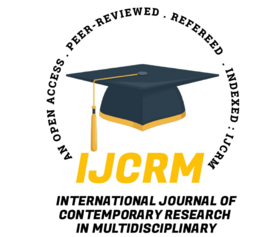International Journal of Contemporary Research In Multidisciplinary, 2025;4(3):49-56
Integrated Approach to Smoke Management System in Healthcare Facilities
Author Name: Jay Kumar Gupta; Prof. Virendra Kumar Paul; Prof. Amarjeet Kaur; Dr. Priyanka Kumari;
Abstract
Smoke management is a critical aspect of life & fire safety in healthcare facilities due to the unique challenges they present. This research study has focused on various issues about the present status of the Smoke management system in six super-specialities healthcare facilities, which have equal representation from Government healthcare facilities, key national-level healthcare Institutions, and private sector healthcare facilities spread throughout the length and breadth of India. Urban healthcare facilities are at the nexus of safety and sustainability. Incorporating Smoke management is pivotal. These systems control smoke during fires, enabling safe evacuation and reducing toxic gas dispersion. When coupled with passive measures such as fire-resistant materials and clear evacuation routes, they enhance safety by containing and evacuating fire-induced smoke. Advanced protection systems, including fire detection and suppression technologies, further strengthen the safety ecosystem. Their integration with smoke management system limits smoke propagation and expedites evacuations, maximizing the safety. This holistic approach optimizes evacuation procedures, reduce smoke-related health hazards, and maintains secure environments. Collaboration of key stakeholders and supportive legislation is essential to mandate safety protocols and promote implementation, involving government bodies, policy makers, urban planners, fire safety experts and healthcare authorities. In doing so, urban healthcare facilities can exemplify the fusion of safety and sustainability in modern urban development, prioritizing the well-being of all stakeholders. This research article presents an integrated approach to smoke management systems in healthcare facilities, focusing on the efficient and effective combination of passive measures, active fire protection systems, and smoke control strategies. The goal is to provide a comprehensive system that ensures the safety of patients, staff, and visitors during fire incidents and further maintains uninterrupted business operations across the healthcare facility. In this paper, major issues about effective smoke management system and strategies in different super-speciality hospitals were discussed, which have direct or indirect bearing on the life and fire safety of hospital inmates, occupants and other key stakeholders, besides ensuring seamless functioning of hospital operations. This article also highlights the importance of an integrated approach to smoke management systems in healthcare facilities, through case studies across six different Super-specialities large healthcare facilities, identifying the critical gaps and factors affecting the effective functionality of smoke management system and suggested ways and means to mitigate fire & life safety hazards through integrated system approach and technological interventions.
Keywords
Healthcare facility, smoke management, smoke control, passive measures, protection system, compartmentation, containment, HVAC, Integration of smoke management system, life & fire safety





